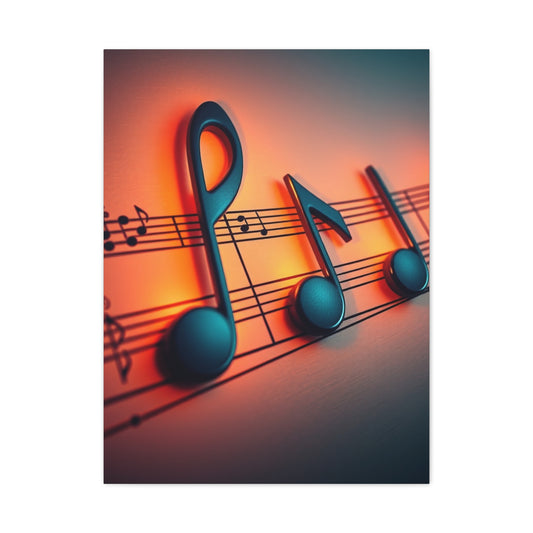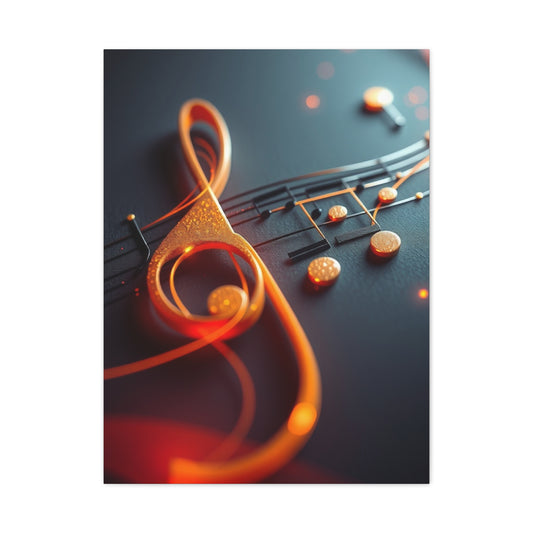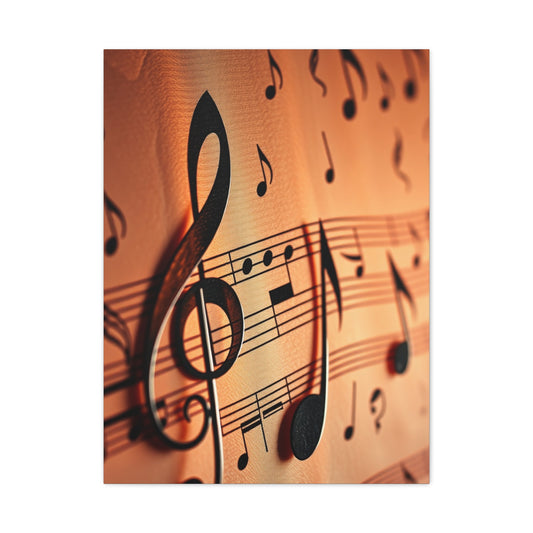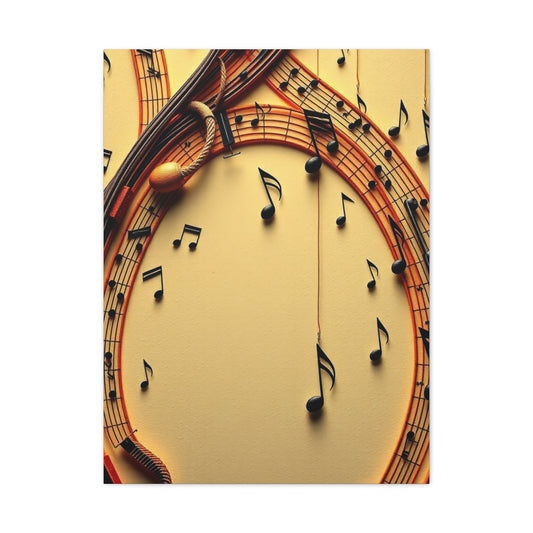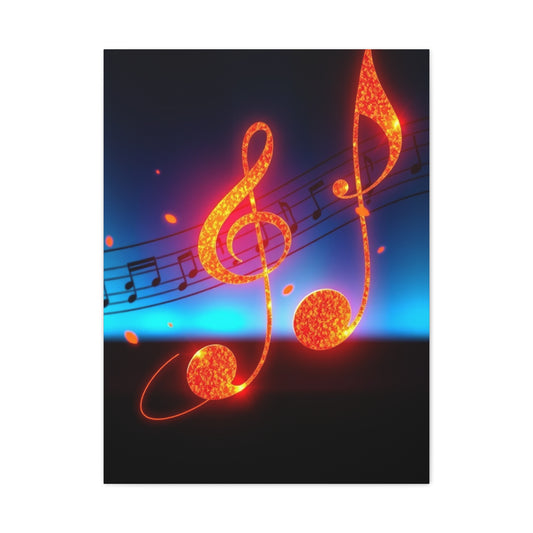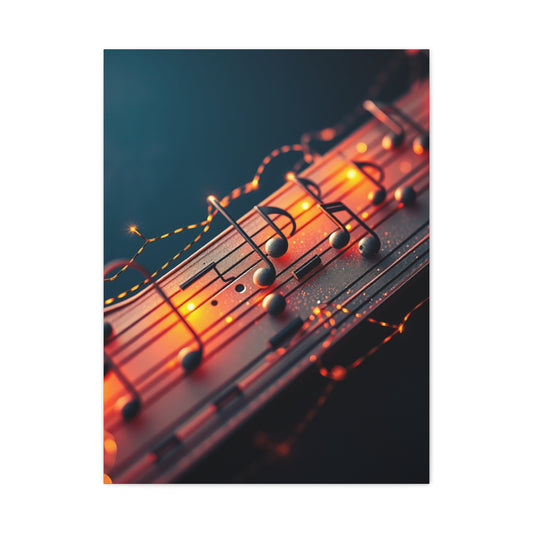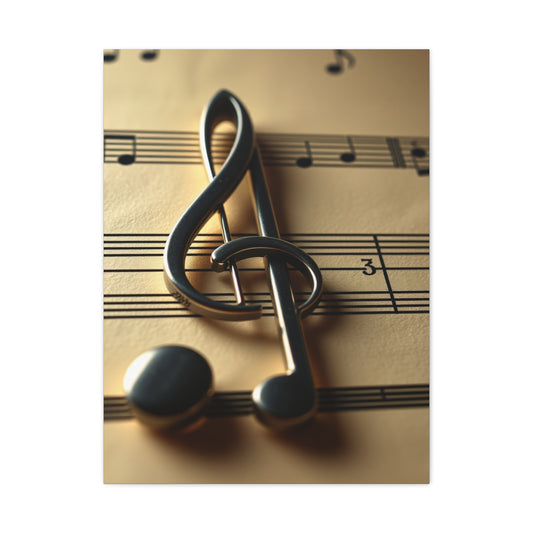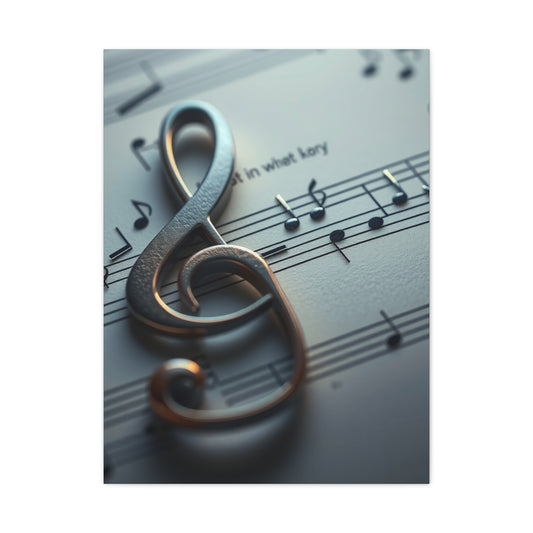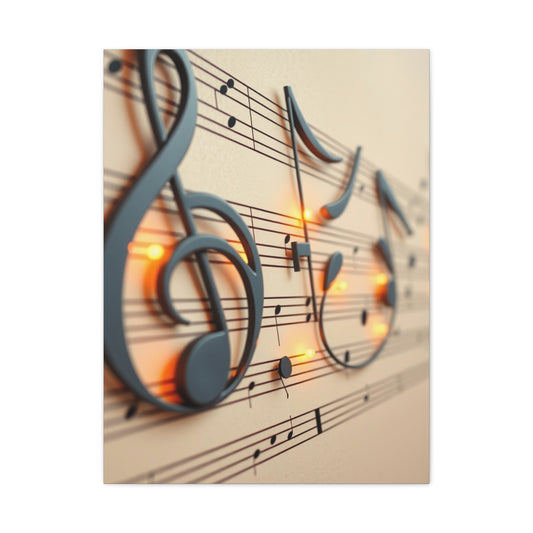Creative Wall Art with Musical Notes: Elevate Your Interiors with Harmony
If you’re a music lover, surrounding yourself with symbols of rhythm and harmony can turn your living space into a sanctuary of expression. Incorporating musical notes into wall art is more than a decorative choice; it is a way to showcase your personality, channel your emotions, and cultivate a sense of melody within your home. From the quiet corners of an apartment to the expansive walls of a studio or house, the infusion of musical note wall art creates an ambiance that balances creativity with sophistication. Music has always been an intrinsic part of human culture, and when its visual representation is woven into interior design, it resonates in a way that uplifts both the environment and the spirit.
This part will explore different dimensions of using musical notes as decor elements. The focus will span from framed artwork and wall decals to DIY crafts, functional pieces, and immersive themed rooms. Each idea will unravel unique approaches to styling while blending aesthetics with imagination. Along the way, you will also discover how historical inspirations, conceptual foundations, and practical methods intersect with modern interpretations, ensuring that your home decor becomes as melodious as the music you love.
Historical Background
The representation of music in decorative forms dates back centuries. Ancient civilizations often used visual symbols of music in their temples, palaces, and communal spaces. Egyptian tombs featured wall illustrations of harps, flutes, and lyrical hieroglyphs that depicted sound as a divine connection. Greek amphitheaters bore murals of instruments and fragments of notations, emphasizing the spiritual link between sound and space. In medieval Europe, illuminated manuscripts combined music with visual artistry, transforming simple sheet music into masterpieces of symbolic art.
As time progressed, musical notes began to transcend functionality and evolved into motifs for ornamentation. The Renaissance celebrated music as a refined pursuit, embedding it into paintings, architectural carvings, and decorative tapestries. In the Romantic period, sheet music became a popular collectible, with beautifully designed covers often framed as art. The transition into modern times brought a fresh appreciation for minimalism, where clean silhouettes of musical notes started appearing on walls as both elegant and playful motifs.
Today, the integration of musical notes into wall art reflects both nostalgia and innovation. It serves not only as a reminder of cultural heritage but also as a canvas for contemporary creativity. By acknowledging this history, one can better appreciate the symbolism behind decorating with music-inspired elements.
Core Concepts and Foundations
When thinking about wall decor that incorporates musical notes, it’s essential to understand the underlying concepts. A musical note is not merely a symbol; it is a representation of rhythm, structure, and harmony. Translating this into wall art means more than just painting or sticking notes on a wall. It involves evoking the sensation of movement, sound, and balance through visual representation.
The foundation of such decor lies in creating resonance between the artwork and the space it occupies. A small room benefits from delicate motifs that echo intimacy, while larger spaces may demand bold and dynamic designs that reflect grandeur. The arrangement, scale, and texture of the musical notes all contribute to how the artwork influences the overall aesthetic. A flowing sequence of notes can suggest a symphony in motion, while a single note can serve as a minimalist statement that radiates clarity.
Another foundational concept is personalization. While some prefer generic representations, many choose notes or fragments from favorite compositions, turning wall art into a reflection of personal taste. Custom illustrations, handcrafted pieces, and bespoke murals elevate this idea further, merging artistry with individuality.
Types and Categories of Musical Note Wall Art
Musical note wall art can be categorized in various forms depending on materials, style, and technique. Each type offers a distinct charm, making it adaptable to different spaces and design sensibilities.
Framed Musical Note Artwork
One of the most timeless options is framed artwork. Prints of sheet music, calligraphic interpretations, or abstract renderings of notes can be placed within frames to form a gallery wall. By mixing frames of diverse shapes, finishes, and sizes, one can achieve an eclectic and layered composition. Some frames may contain classic black-and-white sheet music, while others may feature colorful reinterpretations. A gallery wall arranged in a living room or hallway becomes a focal point that narrates your love for melody.
Musical Note Wall Decals
For those who prefer flexibility, wall decals provide a versatile option. They can be easily applied or removed without leaving permanent marks, making them suitable for apartments or rented spaces. Decals arranged in a flowing wave can create the illusion of music floating through the air. Placing them near a piano, violin, or guitar corner enhances the thematic connection, transforming that area into a personal concert space.
DIY Musical Note Wall Art
Handcrafted decor holds a unique charm. Using wood, metal, or recycled paper, one can design their own interpretations of notes. Painted wooden cutouts mounted on the wall add dimensionality, while a collage made with fragments of vintage sheet music conveys nostalgia. Craft enthusiasts can also create mobiles, suspending notes on strings to create a playful kinetic artwork that dances with air currents. These handmade designs embody authenticity and creativity, offering a sense of accomplishment.
Functional Decor with Musical Notes
Blending function with artistry ensures decor is not only aesthetic but also practical. Musical note-shaped hooks placed in entryways serve both as organizers and as subtle statements. A shelf adorned with note cutouts becomes a hybrid of storage and sculpture. Even household objects like clocks can be reinvented, with note-shaped hands marking the passage of time in a poetic fashion. Such ideas turn everyday utilities into decorative highlights.
Themed Rooms with Musical Decor
For those who desire complete immersion, entire rooms can be designed around a musical theme. A music studio or lounge can feature murals with oversized musical notes intertwined with images of instruments. Lighting fixtures can mimic the elegance of treble clefs or the geometry of staffs, creating ambient illumination. Furniture crafted in unconventional shapes—like a note-inspired chair or table—adds character while reinforcing the central theme. These immersive spaces serve as retreats for inspiration and creativity.
Practical Applications of Musical Note Wall Art
Decorating with musical note wall art is not merely about aesthetics but also about enhancing emotional and psychological experiences. Music-inspired designs can create atmospheres of relaxation, motivation, or celebration, depending on the chosen style.
In a bedroom, delicate watercolor paintings of notes evoke serenity, making the environment soothing. In living areas, bold metallic installations of notes bring energy and dynamism. Offices and studios benefit from structured compositions of notes, symbolizing focus and rhythm in work. Even unconventional spaces such as kitchens or bathrooms can be adorned with subtle note motifs, introducing an element of surprise and joy.
Another application lies in community or commercial settings. Cafés, music schools, and performance spaces use musical note wall art as branding and ambiance enhancers. A café wall covered with whimsical notes invites warmth and conversation, while a studio adorned with educational note charts inspires learners. The adaptability of these designs across contexts proves their enduring relevance.
Techniques and Methods
Creating wall art inspired by musical notes is not just about placing designs on a surface; it involves carefully chosen techniques that align with your home’s aesthetic and the mood you wish to cultivate. The application of such decor can be traditional, modern, or experimental, depending on how you approach both design and execution.
One effective technique is layering. By arranging musical notes in layers of color, texture, or dimension, you create depth that catches light and draws attention. For example, a painted wall mural can be enhanced with three-dimensional wooden or metal cutouts of notes placed strategically on top, allowing a sense of movement that mimics the flow of an actual melody.
Stenciling is another accessible method that brings precision and charm. With a well-cut stencil, you can spray paint or sponge patterns of musical notes across a wall, producing repetitive designs that convey rhythm. Combining stenciled notes with freehand brush strokes allows you to blend structure with spontaneity.
For those who appreciate a tactile feel, relief carving and embossing on panels provide intricate textures. These panels can be hung like framed canvases or used as accent sections in a room. Even wallpaper with embossed or printed musical notes brings sophistication, particularly in formal living areas or home libraries.
A more contemporary approach involves projection mapping. This technique uses projected light or imagery of notes onto a surface, transforming ordinary walls into kinetic canvases. Though not permanent, it allows flexibility for events or themed gatherings, turning walls into symphonies of shifting visuals.
Mixed media techniques are also increasingly popular. Imagine a canvas where sheet music is collaged with ink drawings, layered with acrylics, and finished with metallic leaf embellishments. The interplay of textures produces an eclectic result, making the wall art not just decorative but deeply expressive.
Photography-based methods are equally effective. High-resolution images of instruments, overlaid with floating notes, printed on canvas or glass panels, bring both clarity and vibrancy. Digital art prints created by graphic designers often merge abstract forms with recognizable note patterns, resulting in striking contemporary pieces.
Every method ultimately seeks to capture the essence of sound in visual form, bridging the intangible nature of music with the physical presence of decor.
Challenges and Common Mistakes
While the allure of musical note wall art is undeniable, several challenges often arise when implementing such designs. Recognizing common mistakes beforehand can help you achieve a harmonious result rather than a cluttered or mismatched one.
One frequent challenge lies in proportion. Oversized musical notes can overwhelm small spaces, while tiny motifs may disappear against expansive walls. Achieving scale balance is crucial. A practical approach is to visualize the placement using paper cutouts before committing to permanent designs.
Another mistake is overuse. When every surface is covered with notes, the decor loses its charm and begins to feel chaotic. The power of musical note wall art lies in rhythm and balance, just as in music itself. Selective placement—perhaps one accent wall rather than the entire room—maintains elegance.
Color mismatches can also diminish the effectiveness of such decor. Musical notes, being symbolic, often stand out best in contrasting hues. Using black notes on a dark background may cause the design to blend unintentionally, losing clarity. On the other hand, using too many bright clashing tones creates discord rather than harmony. A carefully curated palette ensures notes remain the focal point without overpowering the environment.
Material choices can also lead to challenges. Adhesive decals may peel if applied to textured surfaces, and wooden cutouts may warp in humid conditions. Selecting materials suited to the wall finish and room climate avoids premature wear.
Another mistake is neglecting context. A wall filled with musical notes may feel disjointed if the rest of the room lacks complementary elements. Integrating supporting decor—such as an instrument corner, music-inspired lighting, or coordinated furniture—creates continuity.
Lastly, many underestimate the importance of placement in relation to furniture. Positioning musical notes too high or too low on the wall disrupts visual flow. Ideally, wall art should align with eye level or connect naturally with nearby objects, ensuring cohesion.
By avoiding these pitfalls, you allow the decor to breathe with grace, turning walls into harmonious compositions rather than dissonant backdrops.
Trends and Future Outlook
Wall art with musical notes has always been versatile, but modern trends are expanding the possibilities in fascinating directions. As interior design evolves, so does the way people incorporate symbolic and artistic motifs into their personal spaces.
One emerging trend is sustainability. Eco-conscious homeowners are choosing reclaimed wood, recycled metal, or biodegradable materials to craft musical note designs. These pieces not only contribute to a greener environment but also bring rustic charm and authenticity to the decor.
Minimalism continues to influence musical note wall art, with simple, monochromatic designs gaining popularity. A single treble clef elegantly painted on a wall or a line of delicate notes etched into glass panels resonates with those who prefer uncluttered living environments.
Conversely, maximalism is also making waves. In these interiors, oversized murals of symphonies, bursting with colors and sprawling notes, dominate feature walls. Combined with dramatic lighting, they create theatrical atmospheres reminiscent of concert halls.
Technology is reshaping the future outlook of this genre as well. Interactive wall panels embedded with sensors can respond to touch or motion, allowing notes to light up or emit sounds when approached. Such designs turn static decor into immersive experiences, blurring the line between art and performance.
Digital art and customizable prints are becoming more accessible through online platforms, enabling homeowners to personalize designs. A wall art piece can now be ordered with notes from a favorite song, lyrics interwoven with calligraphy, or even visualizations of one’s heartbeat converted into musical notation.
Global influences are also diversifying trends. In Asia, traditional calligraphy is being merged with musical symbols, while in Europe, vintage sheet music collages remain timeless. In North America, bold abstract representations dominate modern lofts and creative studios.
The future of musical note wall art lies in its adaptability. As tastes evolve, the motifs will continue to reinvent themselves, proving that music as a visual form is timeless.
Expert Insights
Designers and artists who specialize in music-inspired decor often emphasize the deeper meaning behind using musical notes as wall art. They view these symbols not simply as decorations but as vessels of emotion, rhythm, and memory.
Experts in interior design note that musical note wall art can influence mood significantly. For example, a softly painted sequence of notes in pastel shades may calm and soothe, ideal for bedrooms or meditation spaces. On the other hand, metallic notes arranged in bold compositions can energize, making them suitable for living areas or studios where creativity thrives.
Artists stress the importance of personal connection. Many recommend choosing notes or excerpts that hold sentimental value, such as a wedding song, a lullaby, or a classical piece that inspired you. By embedding personal narratives, the decor transcends aesthetics and becomes part of your identity.
Craft specialists highlight the role of texture. A flat decal may be cost-effective and elegant, but incorporating three-dimensionality through carved wood or welded metal creates shadows and depth, engaging the senses more dynamically.
Music educators also see value in such decor. They point out that walls decorated with musical notes can serve as subtle learning tools for children or beginners, reinforcing recognition of notation in everyday surroundings.
Futurists in design predict a stronger fusion of technology and art, where augmented reality apps will allow people to point their phones at a wall and see animations of notes coming to life. This intersection of tradition and innovation promises to keep musical note wall art relevant for decades to come.
Ultimately, experts agree on one universal truth: wall art featuring musical notes should reflect harmony. Just as in a composition, where every note has a place, so too should each decorative element find balance within the broader arrangement of a room.
Emerging Trends in Wall Art
Wall art inspired by musical notes is continuously evolving, shaped by both global design movements and the intimate desires of individuals to create interiors that resonate with harmony. As society embraces new technologies, sustainable practices, and eclectic aesthetics, the way we visualize and integrate music into home environments has expanded beyond traditional boundaries. Emerging trends reveal how this form of decor has become more versatile, inclusive, and imaginative.
One of the strongest currents in contemporary design is personalization. More homeowners are seeking wall art that embodies not only universal symbols of music but also their personal stories. This might mean incorporating notes from a favorite childhood song, a beloved symphony, or even a handwritten score by a family member. Digital printing technology allows such levels of customization, where a composition close to the heart can be transformed into a large canvas, decal, or mural.
Minimalist trends continue to influence interiors worldwide. Clean lines, monochromatic tones, and uncluttered patterns are favored by those who value simplicity. In this context, musical notes are often represented in a single flowing line across a wall, forming an elegant rhythm without excessive embellishment. Such styles work well in modern apartments or office spaces where subtlety is appreciated.
At the opposite end, maximalist interiors have gained traction, emphasizing vibrancy, eclectic layers, and dramatic impact. Oversized murals bursting with notes and swirling patterns mimic the energy of live performances. These large-scale compositions often dominate entire walls, transforming them into theatrical backdrops that radiate creativity.
Technology is also redefining the landscape of wall art. Augmented reality and projection mapping allow musical notes to move across surfaces dynamically, turning static decor into immersive experiences. Some interactive designs even integrate sensors so that when someone passes by, the notes light up or shift, offering playful engagement. These innovations signal a future where walls will no longer be passive surfaces but active participants in interior storytelling.
Eco-consciousness has become another defining trend. As sustainability takes center stage, many artisans now use reclaimed wood, recycled paper, and biodegradable paints to craft music-inspired designs. These pieces not only honor the planet but also imbue walls with authenticity and raw texture. The fusion of organic materials with symbolic imagery of music creates decor that is both environmentally responsible and emotionally evocative.
Cultural fusion is shaping musical note wall art as well. In Japan, the blending of calligraphy with note motifs reflects harmony between traditional artistry and modern design. In Europe, vintage sheet music collages remain timeless, appealing to those who admire history. In North America, abstract and bold representations dominate lofts and creative studios, while in South America, colorful murals incorporate local rhythms and folklore. These regional influences prove that musical note decor is universal, yet deeply adaptable to cultural identity.
The rise of multifunctional spaces has also propelled the trend of integrating decor with practicality. Walls are no longer mere backgrounds but working surfaces. Chalkboard walls with musical notes allow residents to add lyrics, sketches, or spontaneous doodles, making art interactive and ever-changing. Shelves and hooks designed with note silhouettes combine function with flair, ensuring beauty and utility co-exist.
Altogether, these trends demonstrate that wall art inspired by musical notes is moving towards greater personalization, sustainability, and interactivity, while still retaining its timeless charm.
Step-by-Step Guides
Bringing musical note wall art into your home may seem daunting at first, but with thoughtful steps, it becomes an enriching process that balances creativity with execution. Below are detailed guides that break down different approaches, offering both beginners and experienced decorators pathways to transform their spaces with melodic artistry.
Step 1: Identifying Your Theme
The first step is to determine the theme that will anchor your decor. Ask yourself whether you prefer a minimalist look, a vintage aesthetic, a vibrant bohemian vibe, or a modern futuristic style. Your chosen theme will dictate the materials, colors, and arrangement of your musical note wall art. For instance, a minimalist space may benefit from a single elegant treble clef in black, while a bohemian environment may call for colorful, hand-painted notes sprawling across a wall.
Step 2: Choosing the Wall
Selecting the right wall is crucial. Accent walls work best, as they naturally attract attention. Living rooms, music studios, and hallways often serve as prime locations. Ensure the wall has enough uninterrupted space for the design to breathe. If furniture or shelves are already in place, think about how the wall art will interact with them rather than compete for attention.
Step 3: Selecting Materials
Once the wall is chosen, decide on the medium for your musical notes. Options include decals for temporary designs, paint for permanent motifs, metal or wooden cutouts for dimensionality, and fabric tapestries for a softer aesthetic. Each material brings a different energy. Wood offers warmth, metal conveys boldness, and fabric introduces delicacy. Consider durability as well, especially for high-traffic areas.
Step 4: Preparing the Wall
Preparation ensures longevity and polish. Clean the wall thoroughly to remove dust or grease. If you plan to paint or apply decals, make sure the surface is smooth and dry. For textured walls, consider using panels or frames that can hold the artwork, ensuring designs remain sharp and visible.
Step 5: Designing the Layout
Before committing, sketch or digitally design your layout. This step helps visualize the flow and balance of the musical notes. Cutouts of paper in the shape of notes can be taped to the wall temporarily to test placement. Consider whether you want the notes arranged as if forming an actual melody line, scattered whimsically, or aligned in a structured sequence.
Step 6: Executing the Design
For painting, use stencils for precision or freehand techniques for organic fluidity. If applying decals, start from one corner and work outward, smoothing air bubbles as you go. For mounted cutouts, measure carefully to ensure alignment. Use reliable adhesives or nails, depending on weight. Take your time; the rhythm of music itself is patient, and so should be your process.
Step 7: Adding Complementary Elements
To enhance the design, introduce complementary decor items. Frames with abstract musical imagery, instruments placed nearby, or lighting fixtures shaped like notes can reinforce the theme. Even subtle touches, such as cushions embroidered with music symbols or rugs with rhythmic patterns, extend the harmony beyond the wall.
Step 8: Considering Lighting
Lighting dramatically affects wall art. A spotlight can highlight a sequence of notes, creating dramatic shadows and dimension. Soft ambient lights can make pastel-colored notes glow gently in the evening. Experiment with light placement to maximize impact.
Step 9: Maintaining and Refreshing
Once installed, maintain your wall art with gentle cleaning and occasional adjustments. Over time, refreshing the arrangement with seasonal or thematic changes keeps the decor lively. For example, during holidays, you might add garlands woven around note cutouts or replace certain decals with festive variations.
Step 10: Embracing Personalization
Finally, personalize your space with notes that mean something to you. Choose excerpts from favorite pieces of music, lullabies, or cultural songs. Incorporate lyrics interwoven with note patterns. Personal touches elevate the decor beyond mere beauty, transforming it into a narrative of your identity.
Expanding the Guides with Examples
Imagine a living room wall transformed into a visual sonata. Following the steps above, the theme chosen is modern elegance. The accent wall behind the sofa becomes the stage. After preparing the wall, metallic silver cutouts of notes are arranged in a flowing pattern, mimicking the rising and falling tones of a melody. Subtle LED strip lights are installed at the top edge of the wall, casting gentle illumination that highlights each note. Complementary decor includes a glass coffee table with sheet music embedded within its surface and a rug patterned with fine rhythmic lines. The overall effect is one of sophistication infused with melody.
Now consider a child’s bedroom. Here the theme is playful creativity. The accent wall is painted a pastel shade. Large decals of colorful notes are applied in whimsical arrangements, some forming spirals, others floating freely. A DIY mobile of hanging notes sways gently above the bed. Cushions shaped like treble clefs rest on a reading chair. The atmosphere becomes both joyful and inspiring, encouraging imagination and learning.
In a music studio, the approach may lean towards functionality and inspiration. The wall behind the piano is adorned with framed prints of classical sheet music, interspersed with calligraphic interpretations of notes. A chalkboard section allows the musician to write notations, lyrics, or ideas spontaneously. Lighting is bright and focused, ensuring clarity while maintaining ambiance. This blend of aesthetic and utility makes the wall an active participant in the creative process.
By following such step-by-step approaches, any space can be transformed into a harmonious retreat where music and art coalesce into living design.
Techniques, Philosophies, and Interpretations
When creating wall art inspired by musical notes, it is not only the physical execution that matters but also the underlying philosophy. Decorating walls is more than just ornamentation; it is an act of storytelling, a visual narrative that speaks without words. Musical notes are already a language in themselves, and when translated into visual form, they reveal layers of meaning that connect with memory, culture, and individuality.
One interpretation is symbolic. A single note on a wall can signify purity, focus, or the beginning of a journey. A flowing staff of notes can represent continuity, rhythm, or the cycles of life. Philosophers of art often point out that symbols gain strength through repetition, and in the case of musical motifs, repetition reflects the very essence of music itself.
Another interpretation is emotional resonance. Wall art with musical notes can embody serenity, energy, nostalgia, or joy, depending on the arrangement and style. Gentle watercolors of notes evoke softness and contemplation, while bold metallic installations radiate dynamism. Every choice carries emotional weight, influencing not just the decor but also the psychological environment of the space.
The philosophy also extends to spatial dialogue. Wall art does not exist in isolation; it interacts with architecture, light, and furniture. A musical motif painted across a corner wall may soften angular edges, while a sequence of vertical notes may enhance the height of a room. In this way, musical symbols shape perception of space as much as they decorate it.
At its core, the philosophy of musical note wall art is about harmony. Just as music requires balance between sound and silence, wall art requires balance between imagery and emptiness. Too much overwhelms, too little underwhelms. Striking the right rhythm in visual arrangement mirrors the rhythm of a melody, reminding us that design, like music, thrives on balance.
Integrating Lifestyle with Design
Wall art is most powerful when it becomes a reflection of daily life rather than a distant embellishment. Musical note decor offers countless ways to integrate personal lifestyle with visual design, ensuring that walls are not merely canvases but companions in daily routines.
For musicians, surrounding themselves with symbols of their craft reinforces identity and passion. A violinist may choose murals of flowing notes near their practice area, turning rehearsal into an immersive experience. A pianist might decorate the wall behind their instrument with abstract interpretations of sheet music, blurring the boundary between practice and art.
For families, musical notes on walls can serve as shared narratives. A wall adorned with the lullaby once sung to children becomes a memory woven into daily life. A couple may choose lyrics from their wedding song transformed into art, turning their home into a vessel of cherished moments.
For creative professionals, integrating musical motifs into workspaces enhances focus and inspiration. Writers, designers, or dancers benefit from walls that carry rhythm visually, reminding them of flow, cadence, and creativity. Even in office settings, subtle motifs of notes add freshness and break monotony, proving that art need not be confined to galleries or studios.
Lifestyle integration also includes seasonal adaptation. Just as music shifts with moods, wall art can evolve with time. A wall with removable decals allows families to change motifs based on occasions—bright and playful for holidays, calm and elegant for quiet seasons. This flexibility keeps decor alive and dynamic, reflecting the fluidity of life itself.
Ultimately, integrating lifestyle with musical note wall art transforms homes from static shelters into living symphonies that evolve with those who inhabit them.
Challenges of Execution and Overcoming Them
While the allure of such decor is immense, practical challenges often accompany the creative process. Understanding these obstacles and learning how to navigate them ensures success in achieving beauty without compromise.
One common challenge is aligning vision with execution. Many people envision grand murals but lack the technical skill to paint or install them. In such cases, collaboration with local artists or designers provides expertise while preserving personal vision. For those who prefer independence, starting with smaller projects like framed artwork or decals allows confidence to grow gradually.
Durability is another concern. Materials must withstand environmental conditions such as humidity, sunlight, or dust. Choosing high-quality paints, UV-resistant decals, and properly treated wood ensures longevity. Maintenance also matters; cleaning methods must be gentle enough not to damage the artwork.
Another challenge lies in achieving cohesion with existing interiors. A wall covered in bold musical notes may clash with overly ornate furniture or busy patterns. Overcoming this requires thoughtful planning, ensuring that wall art complements rather than competes. Neutral backdrops often allow musical motifs to shine, while minimal furniture helps avoid visual clutter.
Emotional connection can also present challenges. Sometimes people choose motifs for their aesthetic appeal but find them lacking in personal meaning. To overcome this, select notes, lyrics, or compositions with emotional relevance, ensuring that the artwork continues to inspire long after the novelty fades.
The most subtle challenge is restraint. The excitement of musical note wall art may lead to overuse, filling every surface with motifs. Just as in music, silence enhances melody, so too does negative space enhance decor. Allowing certain walls to remain untouched ensures that those adorned with notes carry greater impact.
By acknowledging and addressing these challenges, the creative journey becomes smoother, resulting in walls that resonate with authenticity and refinement.
The Future of Musical Note Wall Art
The trajectory of design suggests that the future of musical note wall art will merge tradition with innovation in unprecedented ways. As technology, culture, and sustainability continue to shape lifestyles, walls will evolve into more than static surfaces.
Digital integration is at the forefront of this evolution. Augmented reality apps may allow homeowners to scan walls with their phones and watch musical notes come alive as animations, shifting in rhythm with actual music played in the room. Such experiences turn decor into interactive storytelling.
Sustainability will guide material choices. Artists may increasingly use bamboo, cork, or recycled metals to craft musical motifs, blending ecological awareness with artistry. These materials not only reduce environmental impact but also introduce organic textures that harmonize with interiors.
Customization will remain a powerful trend. With advances in printing and fabrication, homeowners can order wall art featuring notes from personal recordings or cultural songs unique to their heritage. This shift democratizes art, making it accessible and deeply personal.
Cross-disciplinary collaborations will expand possibilities. Musicians working with visual artists may create installations that blend sound and imagery, where walls themselves become instruments of experience. For example, panels shaped as notes may vibrate gently when music plays, turning homes into immersive environments.
Globalization will further diversify designs. Different cultures will continue to adapt musical motifs to their aesthetic traditions, producing an eclectic tapestry of styles. From minimalist Scandinavian interpretations to vibrant Latin American murals, the diversity of expression will enrich the universal language of musical note decor.
The future promises walls that do not simply decorate but interact, adapt, and inspire, ensuring musical note wall art remains timeless yet ever-evolving.
Conclusion
The journey through the world of wall art with musical notes reveals that this form of decor is far more than a visual accessory. It is a dialogue between sound and space, past and future, individuality and universality. From historical foundations to emerging trends, from practical applications to philosophical reflections, musical note wall art embodies the essence of harmony in both tangible and intangible forms.
What makes this decor so compelling is its ability to adapt. It can be minimalist or maximalist, traditional or futuristic, functional or purely aesthetic. It resonates in living rooms, bedrooms, studios, cafés, and even public spaces, proving its versatility. More importantly, it connects with people on an emotional level. Whether it is a cherished song immortalized on a wall or a playful sequence of notes bringing joy to a child’s room, the art becomes part of life’s rhythm.
The conclusion is clear: walls are not boundaries but canvases of expression. By incorporating musical notes into decor, you infuse them with rhythm, memory, and personality. You transform them into symphonies that reflect who you are and what you cherish.
As design continues to evolve, the timeless language of music will ensure that such decor remains relevant. Walls adorned with musical motifs will continue to tell stories, inspire creativity, and cultivate harmony. In the end, to decorate with musical notes is not simply to adorn a room but to orchestrate a living composition where art and life play in unison.

